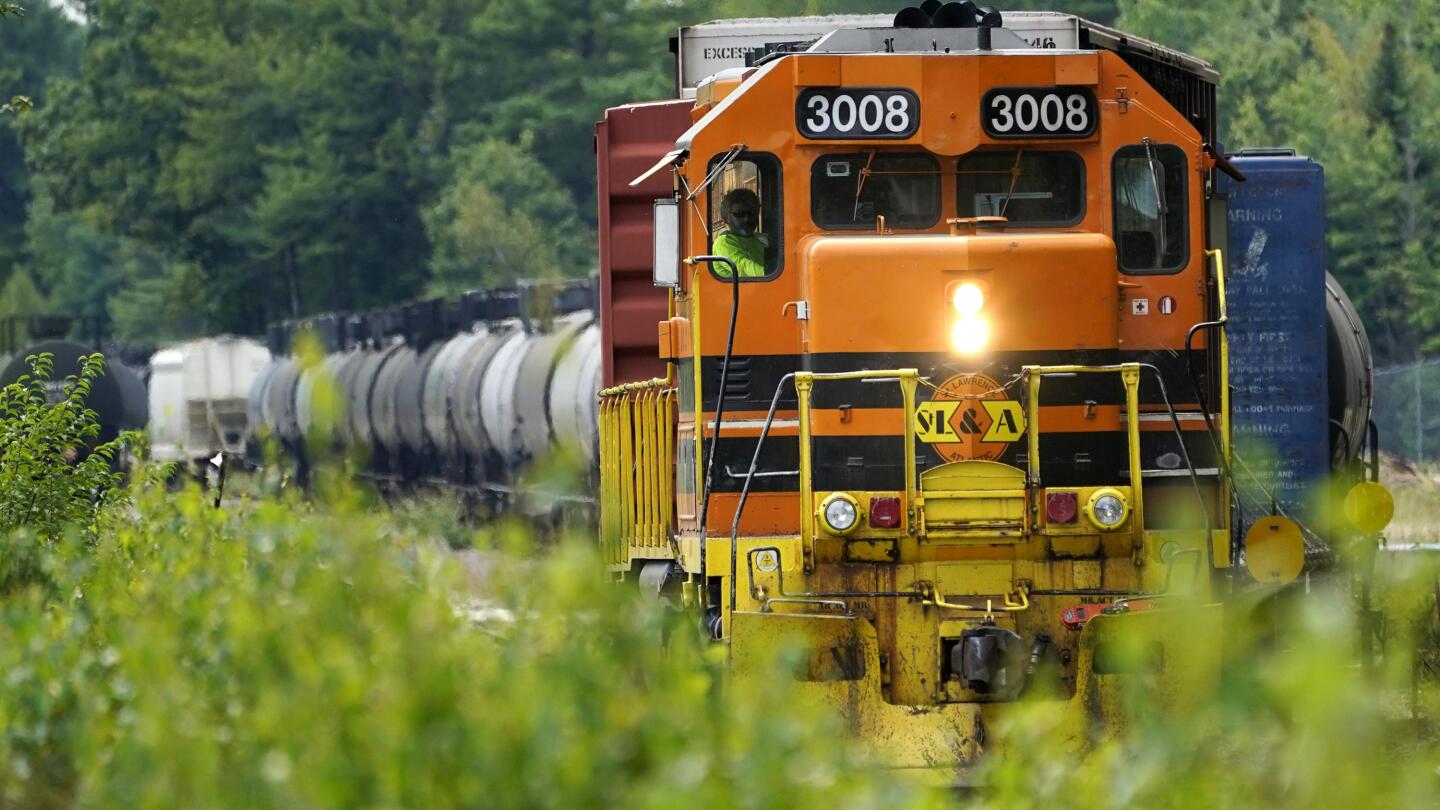F-Line to Dudley
Senior Member
- Joined
- Nov 2, 2010
- Messages
- 9,543
- Reaction score
- 10,376
200 passengers won't break a dining-and-sleeper train even. There's decades of Amtrak and VIA Rail finances to debunk that one. Dining services in particular are a loss leader for passenger railroads worldwide, and particularly in North America. The fact that they're expecting 1000 riders, a figure (as noted in my previous post) TWICE the whole universe of multi-frequency BOS-MTL studies predict, probably sets the steeper bar for 'true' break-even. And then they go on to say in previous articles that they'd get 2000 boardings between Montreal-Sherbrooke-Portland, as if it's going to go Regional Rail-level ridership on the first half of the route at one-a-day frequencies. Their numbers are absolutely laughable.^This topic is continuing to hang around in the news of late. Here's a fairly substantive piece from the AP today (9/10):

Advocates make push for Montreal-to-Boston passenger rail
Rail advocates are dusting off a proposal for passenger train service between Montreal and Boston, riding on a renewed interest in train travel.apnews.com
Some of our rail buffs on here can do a much better job assessing the quality of the assertions therein compared to me, but there are seem to be some notable nuggets in there worth pondering (such as that this could be profitable with as few as 200 passengers per day on the route, even though they predict up to 1,000).
The article also sounds cautionary notes about low speed zones, serious track work needed north of the Canadian border, likely need for multiple crews per train, and need to negotiate with several other parties.
They expect to get $100M in financing from parties in Province of Quebec, whose government hasn't followed through on decades of lip service to try to fish their miles of the Adirondacker/Montrealer route out of the 30 MPH gutter, has refused to do anything in support of the sizeable advocacy for restoring VIA Rail's 1994-discontinued Atlantic train over the same Montreal-Sherbrooke trackage, and refuses to expand Montreal commuter rail (including sandbagging a St. Jean-sur-Richelieu extension that would overlap the first part of this route). They expect to have smooth negotiations with 4 host railroads, including the continent's most notoriously passenger-hostile Class I carrier, CP. And they expect people will pay high prices for modern "luxury" despite having no identified avenues for acquiring modern luxury rolling stock (i.e. not a hodgepodge of rail museum pieces for the sleepers and diners). They expect a brand new Customs stopover to sprout up without red tape with open cooperation from the two national governments, since this service having intermediate stops on both sides of the border means they absolutely must have at-border Customs. They expect crew-change bases to effortlessly install themselves without excess overhead, which is going to be pretty much impossible unless Amtrak agrees to run the POR-BOS miles off their Downeaster spare crew board (meaning a 5th RR to negotiate with).
And they've been trotting out this Plug, Play, and Print Money scheme multiple times over the last 10+ years with a constantly shuffling cast of characters and investor hangers-on. I don't know why the press has gone so ga-ga over it this time other than PR is cheap in the papers these days, but the relative skepticism shown by the state governments in New England is fully warranted. The top and bottom lines on this particular proposal stink to high heaven, whatever you may think of the merits of somebody eventually trying for this market.
FWIW...there'd be a leg to stand on if the Atlantic, which does have a vocal advocacy for VIA Rail restoration in the Martitime Provinces, did get restored. Because then you wouldn't have to worry about the Montreal-Sherbrooke leg and the $100M they claim is needed for upgrades on the first half, and you'd have some frequency scale to glom off of on the densest-ridership intra-Quebec portion. It would simplify the ops negotiations to follow in VIA Rail's wake, simplify Customs because the administration of the Atlantic's two Maine border crossings would simplify the bureaucracy. And you could ensure fast enough passage through Sherbrooke to stretch the crews further (though they'd probably still need Amtrak's help for POR-BOS). But VIA doesn't care, and Quebec doesn't care about the Atlantic despite the Maritimes caring a lot, so there's no practical starting point on the public side. This outfit seems to be glossing over that by citing such wholly unbelievable numbers that they'd somehow be able to self-profit their way around all the logistical obstacles and lack of help. It's fantasy. Easily debunked fantasy.

